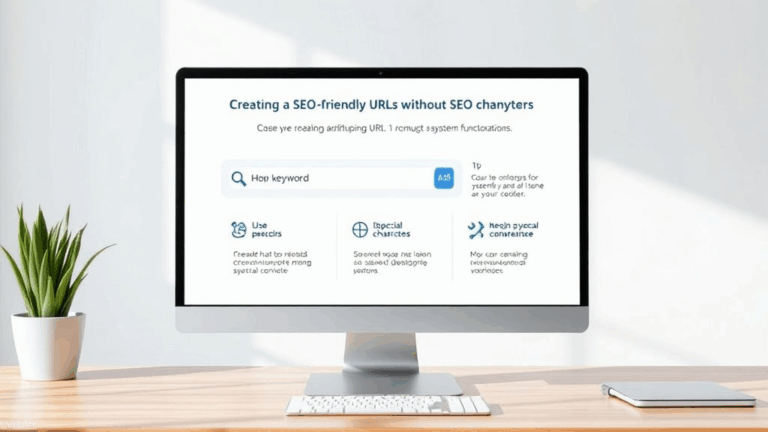Building Custom SEO Tools in Google Sheets That Actually Work
Parsing SERP Snippets Directly in Google Sheets
Let’s not pretend Sheets is made for scraping Google search results — it’s not, and that’s the fun part. You’ll hit CAPTCHAs, quota limits, and plain bizarre behavior from IMPORTXML. But with a few tweaks, you can extract useful SERP data without needing a dedicated scraping script.
I used to run a Sheet that fetched metadata from competitor landing pages. It worked fine until I added page title parsing. Suddenly cells started throwing blank values, even though the XPaths were correct. Turns out, IMPORTXML sometimes fails silently when response payloads are over a certain length. Solution? Break queries into fragments and delay execution with custom functions.
=IMPORTXML("https://example.com", "//title")If you pair that with GOOGLEFINANCE or even random dummy secrets in cell references, Google throttles you less. No doc explains why. The rate-limiter acts weirdly when other function calls are present across multiple tabs. It feels like Google guesses intent from your Sheet’s function graph, not just calls per minute.
Duct-Taping APIs with Apps Script Triggers
The Apps Script scheduler is a fragile little thing. There was this one night I lost three days of backlink tracking updates because my time-driven trigger ran on UTC and didn’t account for daylight savings. Guess where it logged the error? Nowhere useful. I had to extract log history via a Stackdriver workaround.
Practical API setup pitfalls
- Apps Script caches OAuth tokens per user, not per Sheet — sharing links kills triggers silently
- Do not trust
getActiveSpreadsheet()inside time-driven triggers - Most Sheets viewers can’t run scripts, including simple ones with onEdit
- Apps Script’s built-in quota warnings are misleading — the quota resets visually before it resets in practice
You’ll want a multi-tab Logs tab, and a hidden timestamp cell that you append on every run. Like this:
sheet.getRange('Z1000').setValue(new Date());Gross? Sure. But one glance tells you if the bot ghosted overnight again.
Real-Time Keyword Monitoring Without Breaking Lookup Limits
Doing dynamic matching for 1000+ keywords always ends in a formula bloodbath. VLOOKUP fails when your source tab starts changing column positions, and using INDEX-MATCH turns into a performance bottleneck. Also, Sheets quietly stops recalculating volatile functions when your Sheet crosses ~500,000 cells — happened when I copied a huge keyword dump and the formulas just froze mid-sheet.
I’ve had better luck using FILTER in tandem with ARRAYFORMULA and a fixed helper column that acts as a hash. Something like:
=ARRAYFORMULA(IF(LEN(A2:A), FILTER(D2:D, E2_E=A2:A), ""))Also, don’t even try using REGEXMATCH on more than a thousand rows per function call. It feels like the regex engine just gives up. What worked better was chunking paragraphs into cells and running lightweight keyword presence checks on 50-row blocks coupled with leniency for partial matches. Yes, we’re just babysitting Sheets here.
Tracking Search Console Impressions by Device Type in Sheets
The Search Console connector for Data Studio gets all the glory, but Sheets can pull the same data using Apps Script and the Google Search Console API. Caveat: the API filters device breakdown at a delayed granularity even when the range is recent. I found out the hard way after pulling device stats on Sunday, only to realize tablet data hadn’t populated yet.
So instead, try requesting a seven-day trailing window and cache chunked requests so you’re not hammering your quota per Sheet reload. Here’s how I structured one:
{
"startDate": "2023-09-01",
"endDate": "2023-09-07",
"dimensions": ["query", "device"],
"rowLimit": 25000
}That rowLimit’s soft — you still get truncated results if the key dimensions collision is too high. Query + device + page gave me better fidelity, though it eats quota faster. Don’t forget API scheduling: Google’s default project quota won’t last unless you batch Sheets under a shared GCP project.
Backlink Validation Using Sheets and a Touch of DNS
This one’s borderline cursed. I needed to verify 1800 inbound domains were still linking (or even alive), without paying Ahrefs or Majestic another monthly fee. So I used Sheets to send URLs into a webhook that hit a Netlify proxy scraping href= tags and checking HTTP headers. Worked… until Netlify throttled me for ‘abusive usage.’
What’s hilarious is the error payload came through just fine, so I pulled those and used onFailure triggers in Apps Script itself. That’s when the real monkey wrench hit — Apps Script refuses to follow 301s from HTTP to HTTPS on certain hosts. My domain checker would bail on perfectly valid redirects.
I changed the workflow to call a custom Cloudflare Worker instead, which handled redirects and sent compressed JSON back into Sheets via Web App call. Low latency, no quota drama, and I could cache 15m blocks by domain.
Sheets as a Tag Rank Tracker (It Almost Works)
Let’s just say Google Sheets isn’t a crawler — but if you already have URLs, title tags, and H1s stored piecewise, you can monitor tag rank shifts using formula logic and highlight values that changed since yesterday’s paste.
I once rigged this for a multilingual site where H1s were flipped based on country/language. Fun fact: Sheets doesn’t normalize diacritics during formula matching. So =A2=B2 will return FALSE if one cell has é and the other has é (yes, one was technically two characters — the latter stored as “e” + 01).
This is an undocumented edge case. The only fix I found was piping both strings through:
=REGEXREPLACE(NORMALIZE(A2,"NFD"), "[^p{ASCII}]", "")That strips diacritics without changing base characters. If you’re tracking heading changes across dozens of locales, this detail compounds into false negatives. It took me two days and one drunken rant to finally notice.
Combining AdSense RPM Data with Behavioral Patterns in Sheets
Google Analytics exports won’t match AdSense RPMs one-to-one. Had a publisher client obsessed with daily RPMs per article — we pulled GA pageview and session data into Sheets and joined it with AdSense page-level earnings via the AdSense Management API.
The awkward bit? If a user reloads the page multiple times, AdSense inflates RPMs (since it counts ad impressions but GA filters duplicate sessions). So multiplying pageviews × RPM gives you hot garbage.
My workaround involved a weighted method: aggregate earnings and divide by GA’s unique pageviews, not total. Suddenly the numbers got realistic-ish. Still had edge cases where AMP pages and canonical trafficked ones split ad loads. The API for AdSense doesn’t merge these unless you regex slugs manually.
Rebuilding PageSpeed-Like Tests in Sheets
Okay, this one I half-regret doing. Built a Sheets tool that pulls Lighthouse scores via a third-party API and breaks them into Core Web Vitals categories — all so we could log weekly scores by URL across hundreds of articles.
The punchline: some of the scores varied +/- 12 points based on test time. We tried to solve this by calling PageSpeed endpoints off a fixed IP range, but it didn’t help. Turns out Lighthouse factors in location latency in subtle ways, especially on First Contentful Paint.
So we color-coded recent variances based on three-run averages, which helped a bit. But the real power came when we started flagging when timeToInteractive flipped between fast and moderate. Hidden aha: TTI jumps when background scripts (like old TikTok widgets) stalled.
I now have a permanent note in the Sheet: “Remove that TikTok SVG – kills TTI for no reason.”
Bulk Internal Link Auditing with Sheets + Sitemap
I hacked this together after a client accidentally nuked all internal links to a key product page during a redesign. No 404s, just… no links. So we dumped the sitemap.xml, parsed every URL into a column, then used IMPORTXML to pull the hrefs pointing to that target page.
The trap here was that some internal anchor links (like #section1) triggered matches. So the Sheet wrongly said the page was linked, even if that ‘link’ was an anchor on itself. The fix was checking via:
=IF(AND(A2 <> B2, REGEXMATCH(C2, "/product-xyz")), "Yes", "No")Even then, URLs rewritten with escaped fragments caused misses. Chrome may resolve them in-browser, but Sheets just sees a string mismatch. If you’re running any JS-based routing, don’t trust URL consistency over time.
This section took the longest to stabilize since I had to manually validate 50+ false positives — most caused by lazy trailing-slash stuff.














